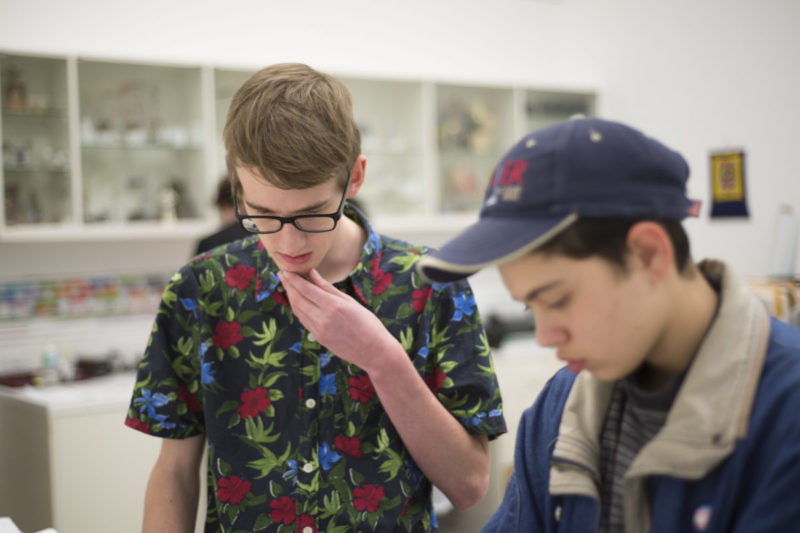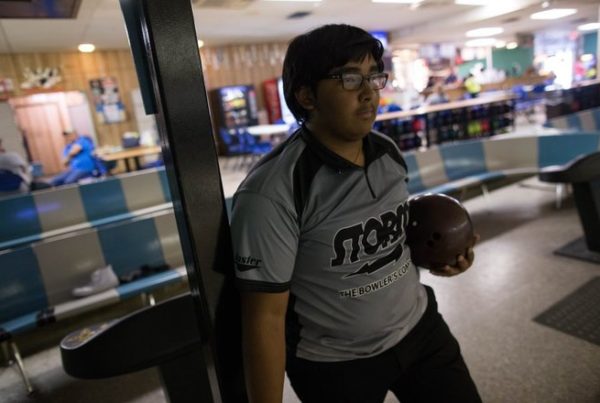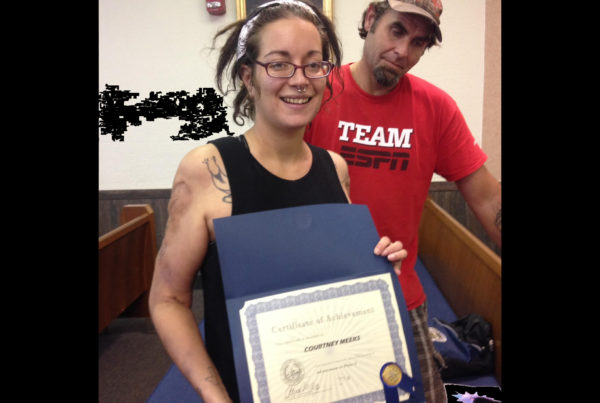From Houston Public Media:
One cold November evening ten years ago, Chanelle Frazier missed her bus home. It turned out to be a pivotal event in her life.
“I saw all these people going in this giant silver building and I was like, ‘What are they doing in that building? It’s thirty more minutes before the bus comes. Maybe I, too, should enter this building,’” Frazier said, laughing.
The giant silver building was the Contemporary Arts Museum Houston (or CAMH). One of the curators was giving a talk on an exhibit and Frazier hung around to ask a question afterwards. Her curiosity led to becoming involved in the museum’s intensive teen program.
They helped organize events, curated exhibitions, and even had a chance to sell their own work at an arts market. It’s also where she learned how to write grants, which proved to be valuable later.
“That kind of leads in to what I do working for the National Museum of Ghana and the African Artist Foundation in Lagos,” Frazier explains. “I’m kind of used in this position as a grant writer/public relations specialist.”
Museums around the country offer similar programs to engage teenagers, but the CAMH is one of four major art museums that took part in the recent study, Room to Rise: The Lasting Impact of Intensive Teen Programs in Art Museums. It included the Whitney Museum of American Art in New York, the Walker Art Center in Minneapolis, and the Museum of Contemporary Art, Los Angeles. The project surveyed more than 260 alumni to measure the programs’ impact.
People are always saying the arts improve our lives.
“But do those outcomes hold up over time?” asks Mary Ellen Munley, who was the senior research analyst for the project. “Where are the influences of that experience popping up in their lives today, now that they are in their mid-20s or early 30s?”
They found that 72 percent of the people surveyed hold jobs in the arts now. Some are artists and teachers and one even specializes in art-related law. For Chanelle Frazier, that teen council years ago was sort of an “ah ha” moment for her.
“It really gave me the space and the opportunity to realize that that was a career path,” Frazier says. “Prior to that, I would’ve never thought that studying art history could result in anything.”
But for the rest who didn’t pursue an arts career, more than half say the experience is still relevant to their work today. “The experience with the arts at that age has really given them a kind of identity that is grounded in a world view that stems from the arts,” Munley says.
Additionally, more than half of everyone surveyed said it was one of the most important experiences they’ve had.
That feeling came through at the CAMH’s latest event. Year after year, a new crop of teens at the museum’s teen art council springs up. They recently held their own show at a venue on the east side of downtown. The place was filled with dozens of kids in their mid-to late-teens; lots of dyed hair, funky eyeglass frames, and vintage clothing. 18-year-old Alex Rodriguez is one of about a dozen students who put the show together. Now she wants to do it as a career.
“It’s been so helpful,” Rodriguez says. “The fact that we’ve been able to curate an exhibit for the Menil, for Foto Fest…It’s been a life-changing experience.”
The program isn’t just for people who want to pursue visual art. Kaiser Shelton says he wants to be a poet. At the show, he read his elegy to the jazz musician Chet Baker.
Eli Winter is another member who doesn’t have a visual arts background. He didn’t know where the journey would lead him when he joined the group last year, but he looks right at home surrounded by a room full of peers as he plays guitar.
“The skills I’ve learned at being a person… I’ve gotten better at just being,” Winter says. “And that’s a weird, new-agey thing to say, but it’s really true.”

















